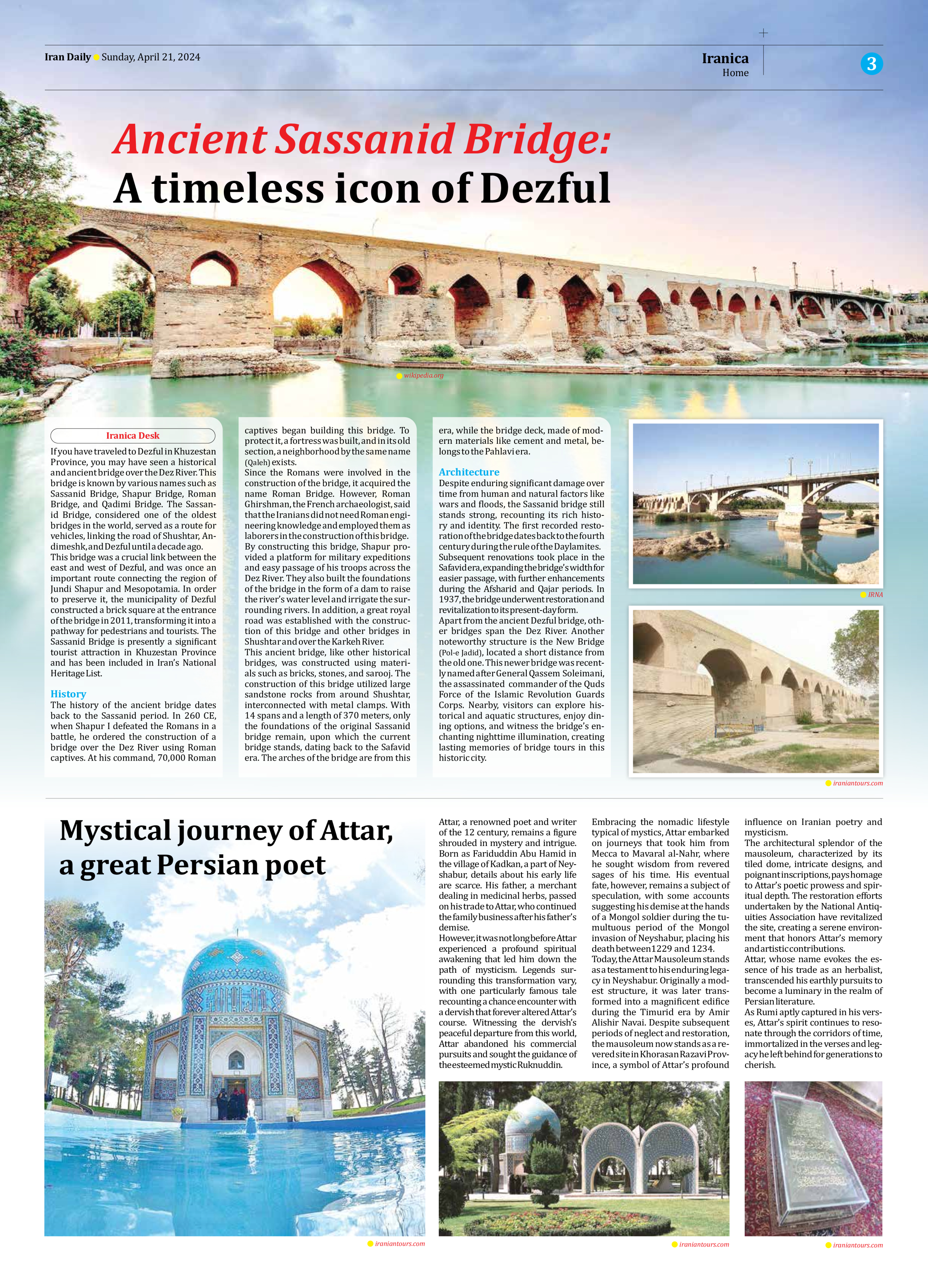
Ancient Sassanid Bridge: A timeless icon of Dezful
If you have traveled to Dezful in Khuzestan Province, you may have seen a historical and ancient bridge over the Dez River. This bridge is known by various names such as Sassanid Bridge, Shapur Bridge, Roman Bridge, and Qadimi Bridge. The Sassanid Bridge, considered one of the oldest bridges in the world, served as a route for vehicles, linking the road of Shushtar, Andimeshk, and Dezful until a decade ago.
This bridge was a crucial link between the east and west of Dezful, and was once an important route connecting the region of Jundi Shapur and Mesopotamia. In order to preserve it, the municipality of Dezful constructed a brick square at the entrance of the bridge in 2011, transforming it into a pathway for pedestrians and tourists. The Sassanid Bridge is presently a significant tourist attraction in Khuzestan Province and has been included in Iran’s National Heritage List.
History
The history of the ancient bridge dates back to the Sassanid period. In 260 CE, when Shapur I defeated the Romans in a battle, he ordered the construction of a bridge over the Dez River using Roman captives. At his command, 70,000 Roman captives began building this bridge. To protect it, a fortress was built, and in its old section, a neighborhood by the same name (Qaleh) exists.
Since the Romans were involved in the construction of the bridge, it acquired the name Roman Bridge. However, Roman Ghirshman, the French archaeologist, said that the Iranians did not need Roman engineering knowledge and employed them as laborers in the construction of this bridge.
By constructing this bridge, Shapur provided a platform for military expeditions and easy passage of his troops across the Dez River. They also built the foundations of the bridge in the form of a dam to raise the river’s water level and irrigate the surrounding rivers. In addition, a great royal road was established with the construction of this bridge and other bridges in Shushtar and over the Karkeh River.
This ancient bridge, like other historical bridges, was constructed using materials such as bricks, stones, and sarooj. The construction of this bridge utilized large sandstone rocks from around Shushtar, interconnected with metal clamps. With 14 spans and a length of 370 meters, only the foundations of the original Sassanid bridge remain, upon which the current bridge stands, dating back to the Safavid era. The arches of the bridge are from this era, while the bridge deck, made of modern materials like cement and metal, belongs to the Pahlavi era.
Architecture
Despite enduring significant damage over time from human and natural factors like wars and floods, the Sassanid bridge still stands strong, recounting its rich history and identity. The first recorded restoration of the bridge dates back to the fourth century during the rule of the Daylamites.
Subsequent renovations took place in the Safavid era, expanding the bridge’s width for easier passage, with further enhancements during the Afsharid and Qajar periods. In 1937, the bridge underwent restoration and revitalization to its present-day form.
Apart from the ancient Dezful bridge, other bridges span the Dez River. Another noteworthy structure is the New Bridge (Pol-e Jadid), located a short distance from the old one. This newer bridge was recently named after General Qassem Soleimani, the assassinated commander of the Quds Force of the Islamic Revolution Guards Corps. Nearby, visitors can explore historical and aquatic structures, enjoy dining options, and witness the bridge’s enchanting nighttime illumination, creating lasting memories of bridge tours in this historic city.







